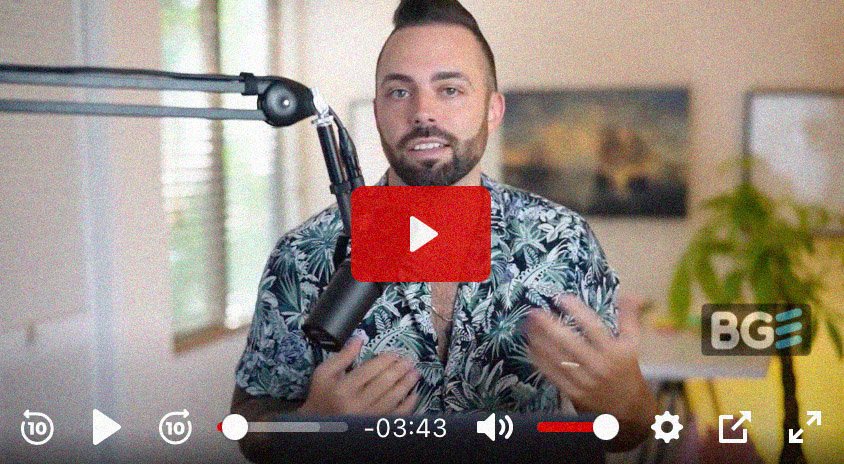How to fact-check your blog post
A simple process to insure accuracy and credibility
Whenever you publish an article, and even more so if you criticise or review a person, a company, or a product, accuracy is important. Getting the facts wrong isn’t just embarrassing, it can damage your reputation, undermine trust, and even expose you to legal risks.
In today’s online world, where misinformation spreads easily, you need a reliable process for fact-checking before sharing your work.
And with AI tools generating text, images, and even statistics, there’s an extra layer of risk. That’s why the following process also covers double-checking AI outputs, helping ensure my blog is backed by verified sources and includes the necessary disclaimers.

Why following a process matters
Readers look to reviews and critiques to help them make decisions. But if a claim about pricing, refunds, or access terms is wrong, it can quickly undermine your credibility. This applies to any review of a person’s work, a company’s service, or a creative production.
Imagine recommending a course that promises a refund policy, only for a reader to discover later that refunds are no longer available. Not only do they lose money, they lose trust in you. Credibility, once damaged, is hard to rebuild.
Use first-party sources first
Before publishing a claim, always check the official source: the product website, the company’s press releases, or the creator’s own channels. Key details like pricing, access terms, or refund policies should come directly from the provider, not from third-hand blogs or forums.
For instance, if a brand advertises “lifetime access,” verify it directly on their official page. Sometimes, “lifetime” means the life of the course, not the buyer’s lifetime. Save a copy or take a screenshot for your records.
Flag opinions vs. facts
Transparency is key. In drafts, I separate three categories:
- Confirmed facts (pricing, product features, refund terms)
- Audience sentiment (from Reddit, TrustPilot, Quora, other reviews, or comments on other platforms.
- Editorial insight (in-depth analysis)
This way, readers know what’s objective data and what’s subjective interpretation.
Mixing facts with opinions can mislead readers. “Refunds are slow” is one student’s complaint, while “Refunds take 30 days” is an official term. Keeping these separate avoids confusion.
In Google Docs or Notion, color-code sentences as green (facts), blue (opinions), or orange (analysis). It makes editing clearer.
Cross-reference multiple third-party reviews
No single review is trustworthy on its own. Compare multiple sources: Reddit threads, Trustpilot ratings, independent blogs, YouTube reviews, or even niche Facebook groups. Look for patterns rather than outliers. If several reviewers highlight the same strength or weakness, it’s more reliable.
If three reviewers mention strong community support but one complains about poor response times, the weight of evidence points to generally strong support. The outlier is still useful, but it shouldn’t dominate your conclusion.
When cross-referencing, take quick notes in a spreadsheet. A simple column format (source, date, sentiment) helps you see trends at a glance.
Save screenshots and date-stamps
Facts change. Prices rise, refund policies shrink, or bonus features disappear (a course may list a bonus community group in January, but remove it by July. Without dated evidence, you can’t prove what was offered at the time of your review). To protect both myself and readers, I keep a folder of screenshots with visible dates, plus a spreadsheet logging URLs and timestamps.
Screenshot tools are perfect for this. When you revisit your review months later, you’ll be able to confirm what was true when you first published.
Add built-in disclaimers
Every review includes a disclaimer:
“This review is based on publicly available information as of [month/year]. While I strive for accuracy, please confirm details such as pricing, refund terms, and access rights with the provider before purchasing.”
This sets expectations and prevents misunderstandings. It also protects you from backlash if providers quietly change their terms after publication. That’s why adding “Last updated March 2025” at the top of a post reassures readers they’re not looking at outdated information.
Keep a short disclaimer for blog posts and a longer one for product reviews or affiliate-heavy content.

Final pass with a fresh pair of eyes
Before publishing, I run each review through a fact-check with AI assistance. Think of it as an editor-in-chief pass: re-verifying claims, hunting for red flags, and ensuring everything aligns.
Still, AI tools can hallucinate or misinterpret. The final pass is about applying skepticism: asking yourself, “Is this claim really supported?”
Let the draft “cool off” for a day before revisiting it. Fresh eyes (yours or a trusted peer’s) will spot issues you missed in the first round.
Fact-checking AI-generated content
With AI tools producing text and images at scale, fact-checking their output is just as important as fact-checking human sources.
When AI invents its sources
Over a year ago, I published a post about passive income, an earlier version of this one). For the research, I asked ChatGPT to find statistics on side-hustle earnings. It returned figures attributed to Luisa Zhou, a well-known influencer. The numbers looked compelling, and I highlighted them.
In the beginning, I didn’t worry too much about sources: there are so many other things to think about when you’re starting a blog. But as my experience grew, I wanted to add them in and asked the AI to provide all the references. It gave me five, including this one: “Luisa Zhou, 2024 Side Hustle Statistics: Who’s Earning What and Why.”
When I checked them to add the links, I realised that only one of these references was real, and it dated back to 2016. The others were pure inventions. Luisa Zhou had never written such an article, and none of those statistics came from her.
For this reason, readers today are increasingly sceptical of AI-generated content, and if you repeat an error produced by it, you’ll be the one held responsible. Protecting your credibility therefore requires extra vigilance.
Practical strategies include:
- Lateral reading: Open additional tabs and verify AI statements against trusted, authoritative sites.
- Check citations carefully: If AI provides a source, click through and make sure it really exists.
- Reverse image search: Verify whether AI-generated or suggested visuals are authentic, reused, or manipulated.
- Cross-check statistics: Numbers can be fabricated or outdated. Compare AI outputs against reliable databases like Pew Research, Statista, or government reports.
- Check for recency: AI often surfaces older data. Always confirm the publication date so you’re not citing information from a decade ago.
Combining these methods ensures your reviews remain reliable, even when AI enters the picture.
🎧
Prefer to listen? This topic is also explored in one of my podcast episodes:
Sources:
- 6-Step Accuracy & Credibility Framework (internal document, 2025)
- Stanford Web Credibility Project: Guidelines for Web Credibility (2002)
- Articulate: How to Fact-Check AI Content Like a Pro (2024)
- Microsoft: How to Fact-Check AI (2024)
Great to have you here! Feel free to leave your thoughts in the comments.
Hello, I’m John Dawson, a graphic designer (for a little while longer) and the writer behind DawsonDecoded, where I share hands-on insights on AI, blogging, social media, and whatever else crosses my mind.”
Get new posts by email when they’re worth sharing.
No spam.
More on blogging:
How to start a blog and find your first readers (part 3)
Reading Time: 9 minutesMake it look and feel professional: pick a lightweight theme, set a basic brand kit, and publish the must‑have pages.
Can you still make a living from a blog in 2025?
Reading Time: 5 minutesBetween viral promises and reality, can a blog still generate a viable income in 2025? Here’s what the numbers say.
Blogging with AI
Reading Time: 4 minutesAI can speed up ideas, drafts, and edits, but it should assist rather than replace you. Keep your voice, verify facts, and add your perspective so posts stay authentic and useful.
How to start a blog and find your first readers (part 2)
Reading Time: 8 minutesIn Part 2 of this beginner’s guide, we move from idea to reality by getting your blog online. You’ll learn what domains and hosting actually are, and how to install WordPress in just a few clicks.
How to start a blog and find your first readers (part 1)
Reading Time: 6 minutesLearn how to choose a blog niche you’ll love and a name that can grow with you, the first step in building a successful blog.
What are the best social media platforms to drive traffic to your blog?
Reading Time: 10 minutesWhich social platform is best for growing a blog? Here’s a breakdown of the main networks: their audiences, strengths, and weaknesses.
More on blogging:
You might like:
Words that are mine
Reading Time: 2 minutesAfter months of writing mostly for algorithms and sales funnels, I stopped obsessing over online income and started writing in my own voice.
Eight months chasing a mirage
Reading Time: 3 minutesEight months in, I’m changing course. I’m going back to casual blogging and stepping away from the commercial / affiliate angle. The pressure’s off, and I finally have my life back.
From BGE to “Launch to $10K”, Enfroy’s strategic shift signals the end of SEO-first blogging
Reading Time: 4 minutesAs of November 2025, BGE runs as a free masterclass and Enfroy funnels to Launch to $10K. With AI Overviews reducing clicks, commercial blogging is rarely a standalone model anymore.
The dark side of online income: how scammers are using AI and social media to make millions
Reading Time: 7 minutesScammers use AI and social media ads to create fake funnels that mimic legitimate ones. This post explains how they work and what ethical marketers can learn.
Betting on yourself: why creating content will always be more profitable than playing the lottery
Reading Time: 8 minutesWhy blog instead of buying lottery tickets? Because the odds and the long-term payoff make content creation a far smarter bet for financial success.
Are influencer courses still worth it in 2025, or just built on yesterday’s internet?
Reading Time: 3 minutesOnline courses promise to teach you how to make money as a creator. But in 2025, are they worth it or just selling outdated methods?
Can you really make passive income with stock photography in 2025?
Reading Time: 23 minutesCan you really earn passive income selling stock photos? I tested it myself. Here’s what the reality looks like and what it takes to make it work.















Leave a Reply